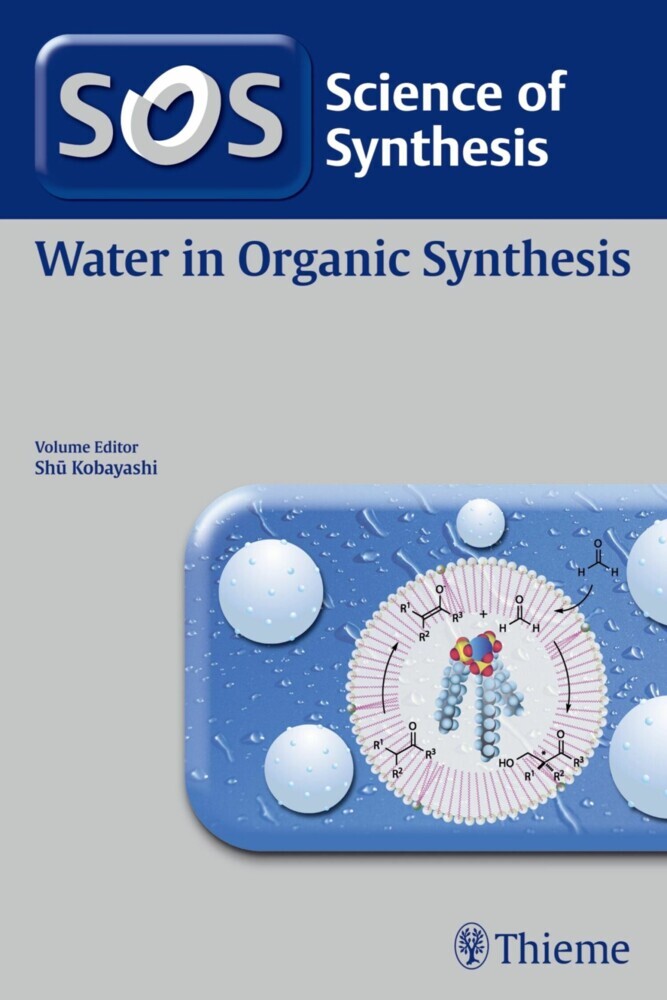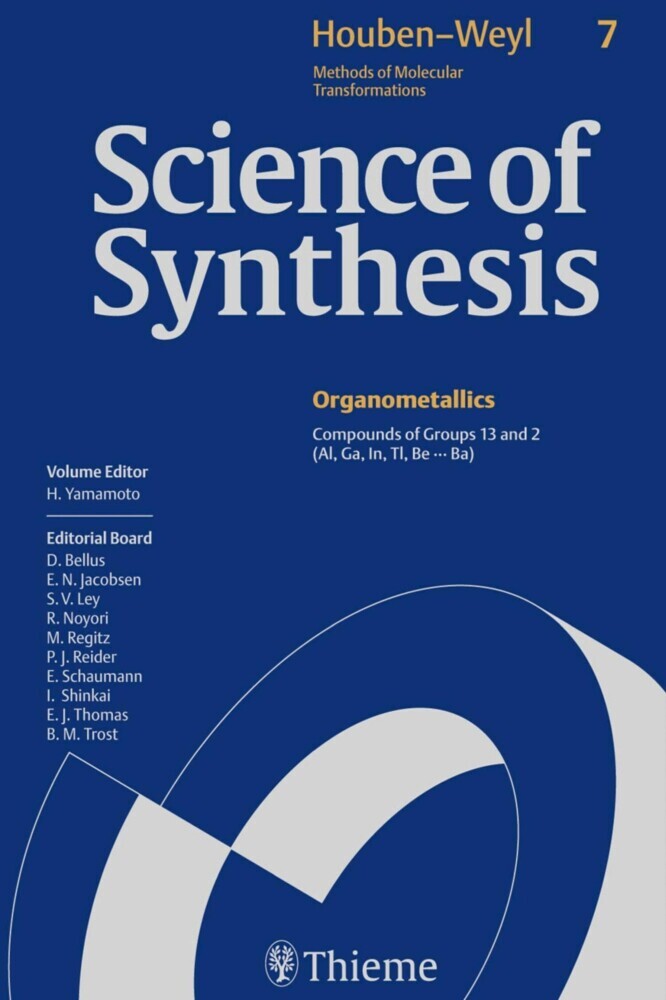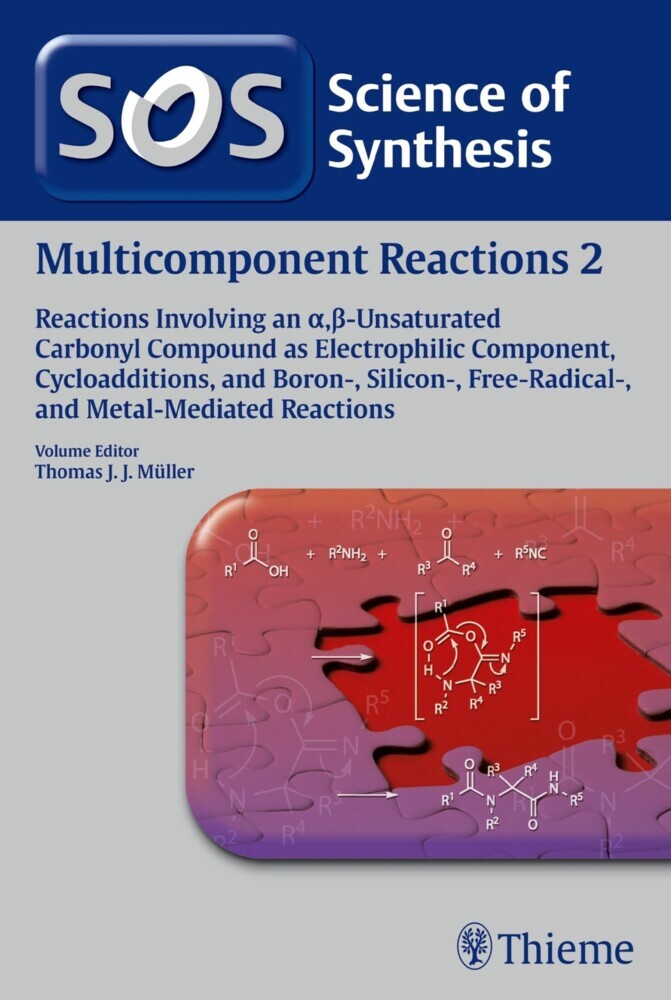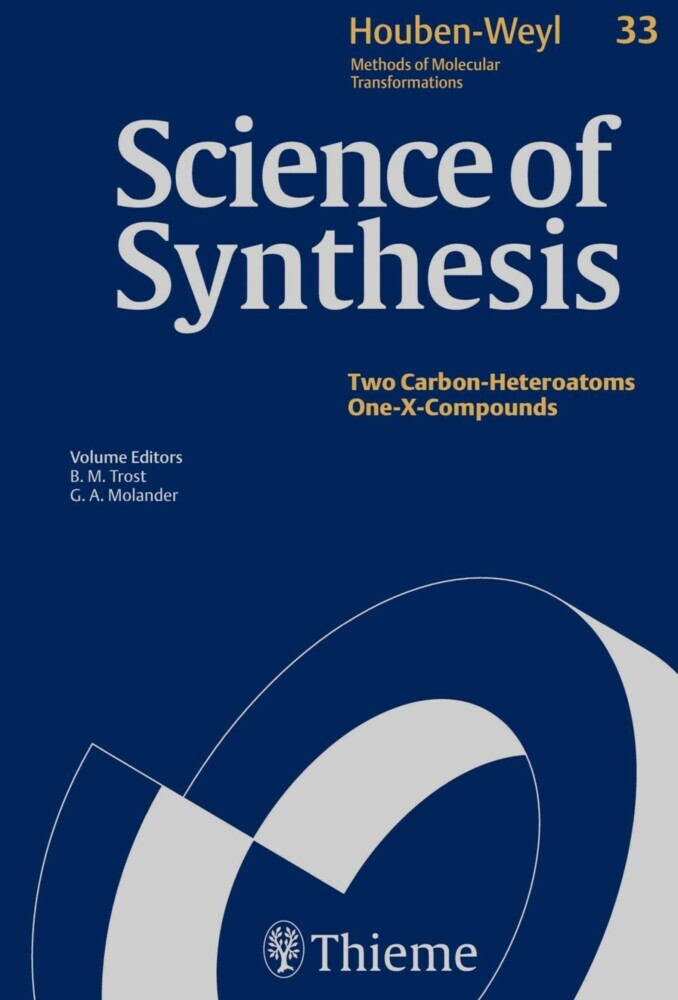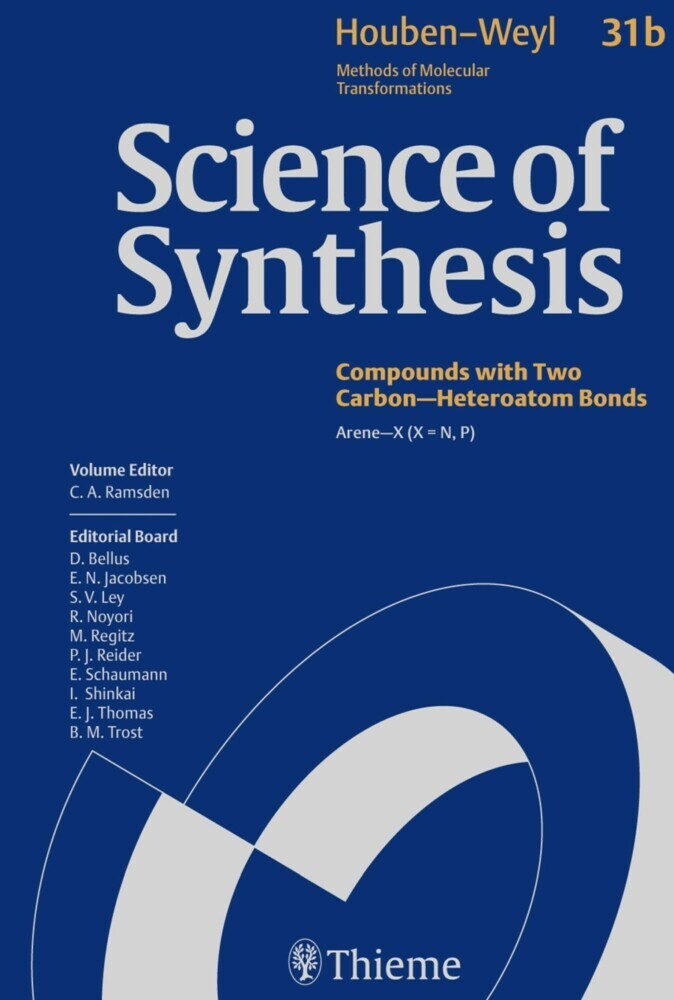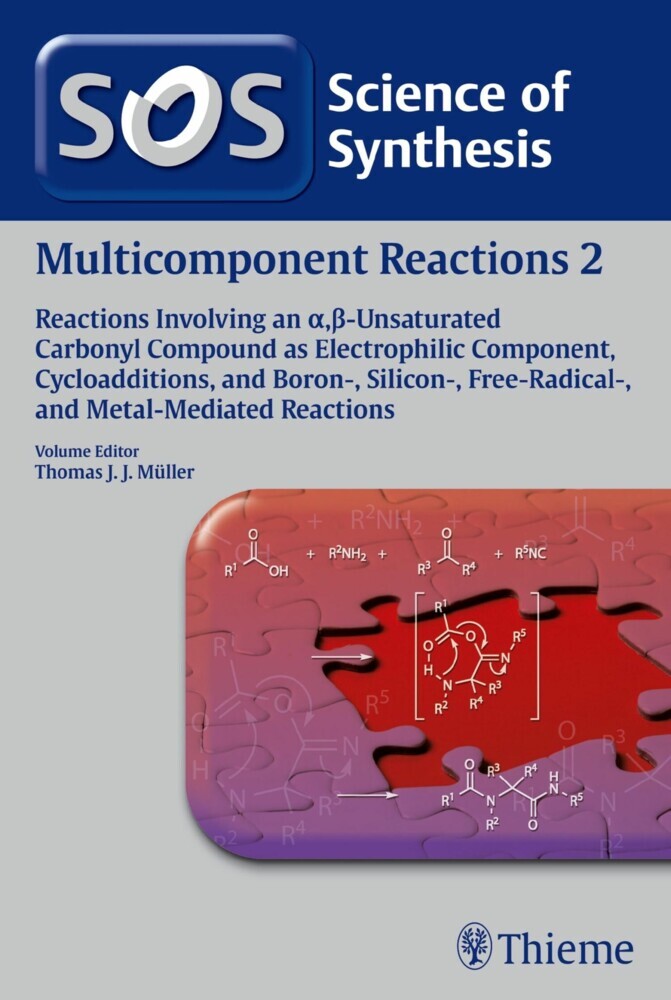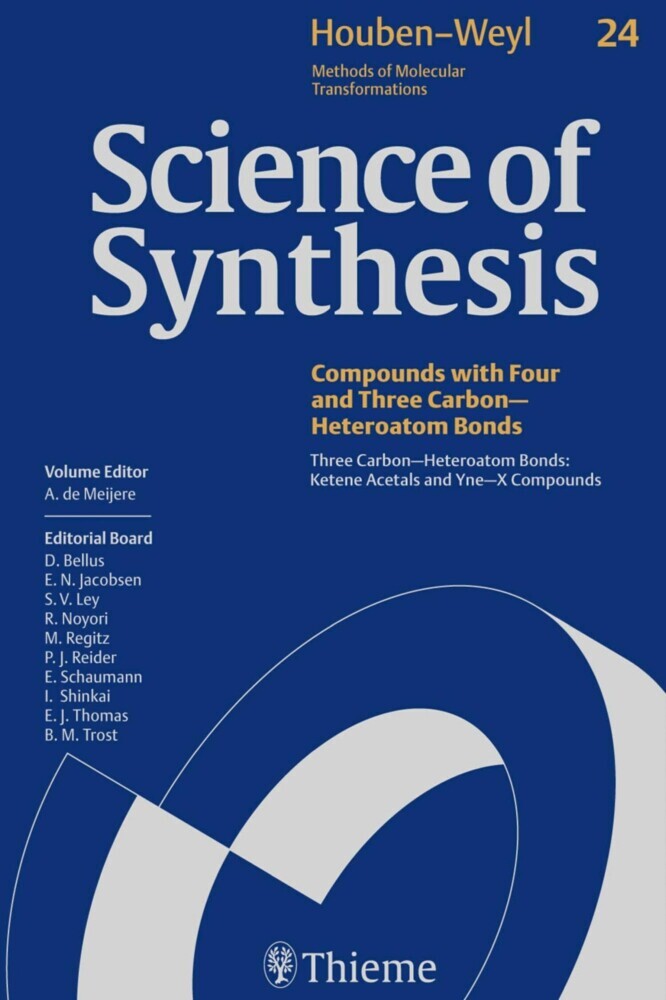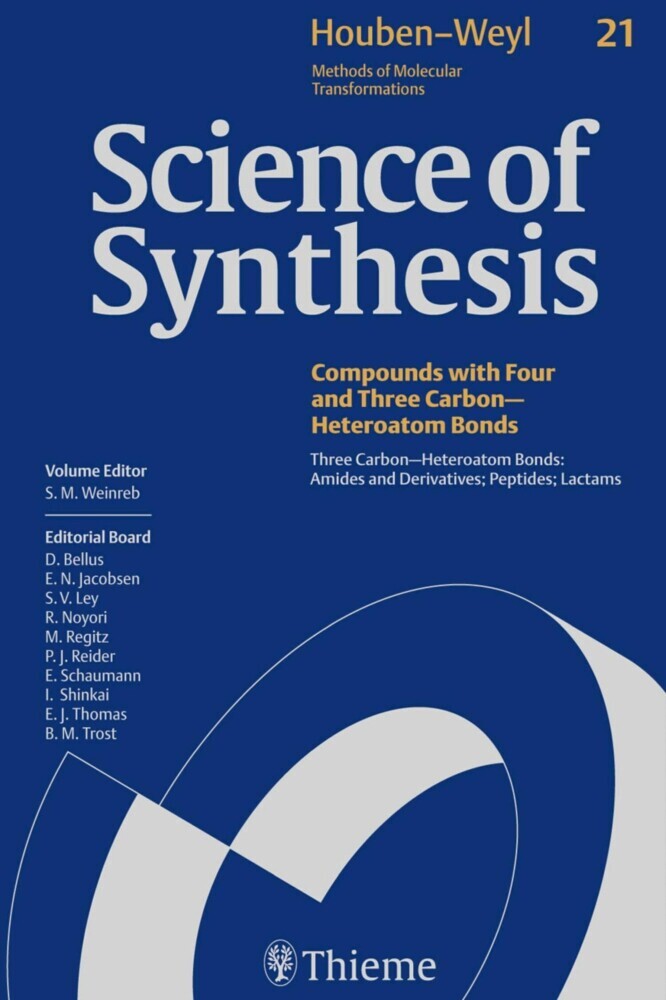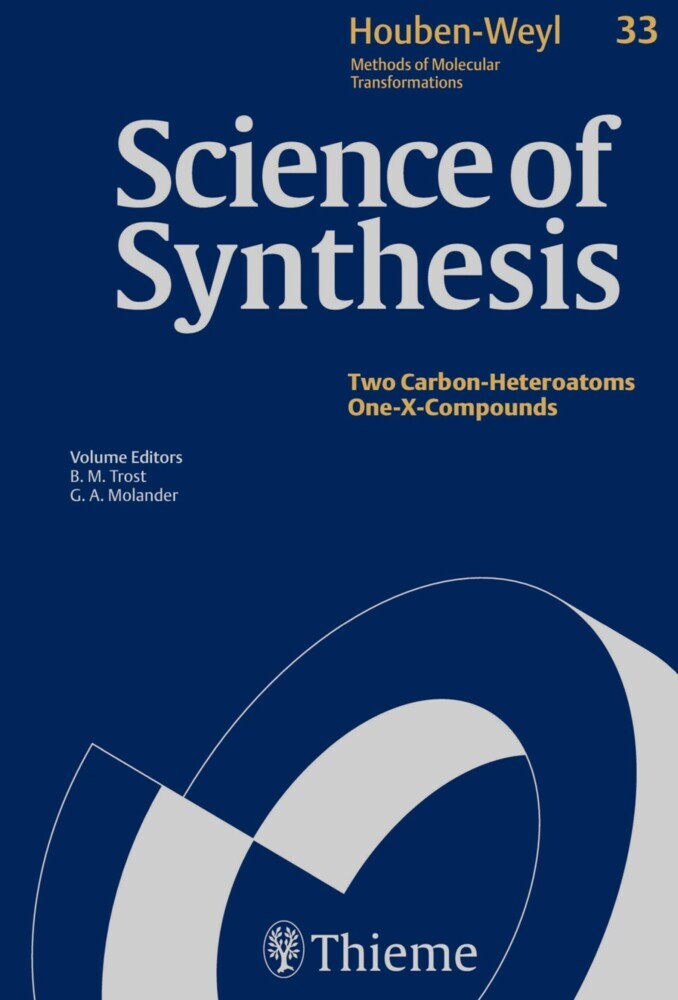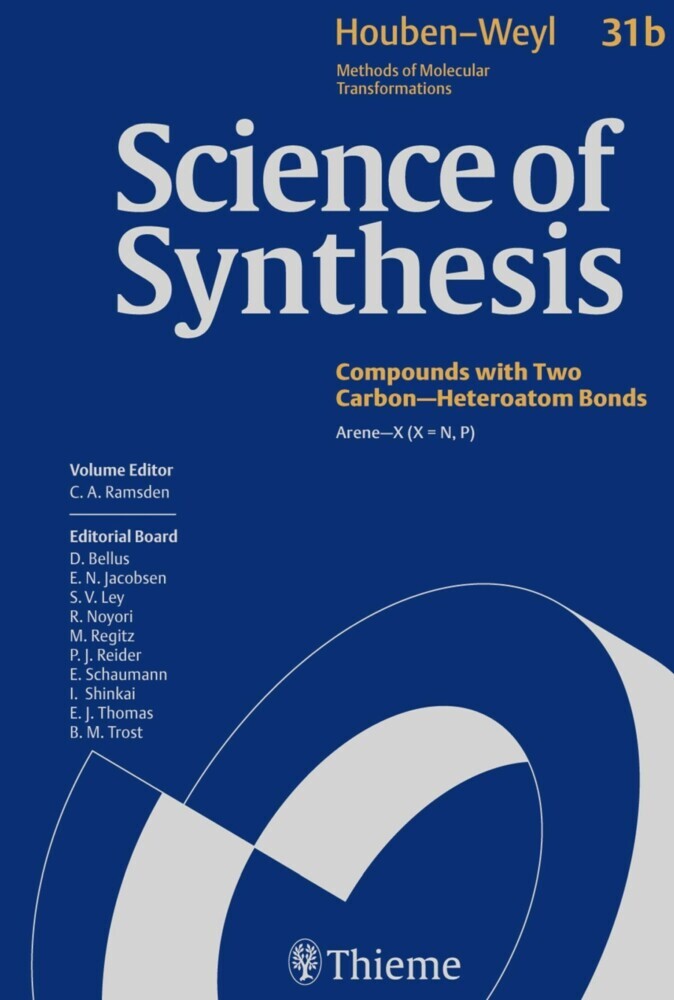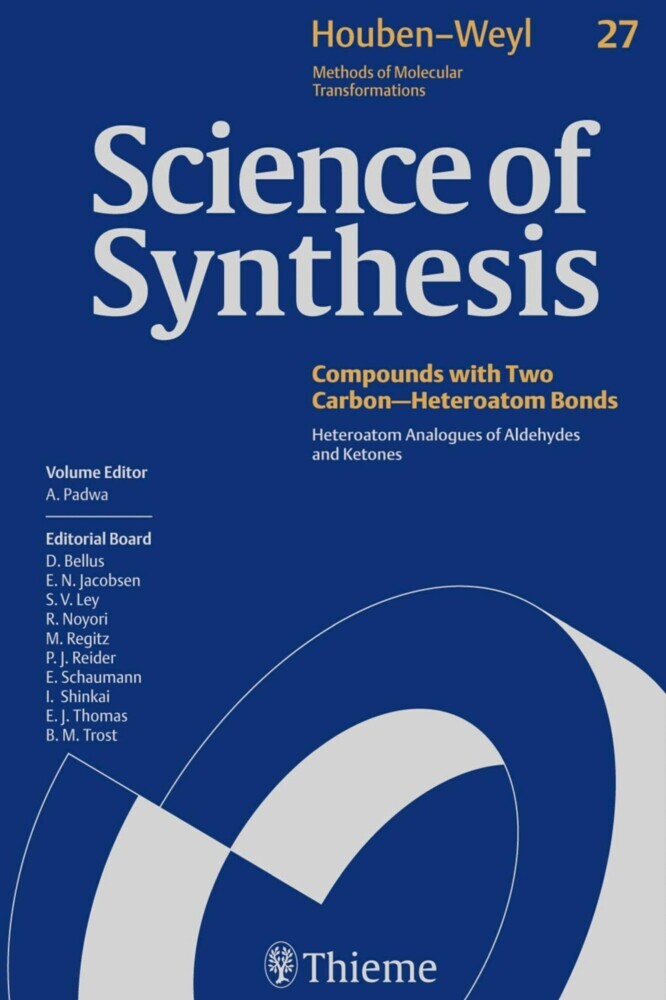Science of Synthesis: Water in Organic Synthesis
Water in Organic Synthesis is essential for the organic chemist in helping gain a thorough appreciation of the latest and most reliable available methods for using water in organic synthesis. It illustrates how water can often be a viable and green solvent in the laboratory and provides a detailed introduction to the subject: background information, evaluated methods, practical applications, industrial applications, special techniques, and an overview of the latest trends. The reference work also helps in inspiring chemists worldwide to find new approaches and techniques for the application of water in organic synthesis.
- Comprehensive overview of a rapidly progressing field
- Critical review of aqueous reactions by 47 experts
- Covering almost all types of organic reactions
- Including special techniques with water and industrial applications
- Emphasis on environmental aspects
1;Science of Synthesis: Water in Organic Synthesis;1 1.1;Organizational Structure of Science of Synthesis;2 1.2;Science of Synthesis Reference Library;3 1.3;Title page;5 1.4;Imprint;7 1.5;Preface;8 1.6;Volume Editor's Preface;10 1.7;Abstracts;12 1.8;Overview;28 1.9;Table of Contents;32 1.10;1 Introduction;54 1.10.1;1.1 Water-Compatible Lewis Acids;54 1.10.2;1.2 Lewis Acid--Surfactant Combined Catalysts for Organic Reactions in Water;58 1.11;2 Structure and Properties of Water;70 1.11.1;2.1 The Single Water Molecule;71 1.11.2;2.2 Liquid Water;73 1.11.3;2.3 Water as a Reaction Medium for Organic Synthesis;77 1.11.4;2.4 Thermodynamics of Hydration;78 1.11.5;2.5 Solvent Properties of Water;79 1.11.5.1;2.5.1 The Size of the Water Molecule;79 1.11.5.2;2.5.2 Polarizability;80 1.11.5.3;2.5.3 Solvent Polarity Indicators;81 1.11.5.4;2.5.4 Solvatochromic Solvent Parameters;82 1.11.5.5;2.5.5 The Solvatochromic Comparison Method: Linear Solvation Energy Relationships;83 1.11.5.6;2.5.6 Cohesive Energy Density;85 1.11.5.7;2.5.7 Internal Pressure;85 1.11.5.8;2.5.8 The Ionic Product of Water: Proton and Hydroxide Ion Mobilities;85 1.11.5.9;2.5.9 Water at High and Low Temperatures and Pressures;86 1.11.5.10;2.5.10 Water and Deuterium Oxide;87 1.11.6;2.6 Aqueous Electrolyte Solutions;88 1.11.6.1;2.6.1 Ionic Hydration: Hydration Numbers;88 1.11.6.2;2.6.2 Dynamics of Ion Hydration;90 1.11.7;2.7 Hydrophobic Effects;91 1.11.7.1;2.7.1 Hydrophobic Hydration;92 1.11.7.2;2.7.2 Hydrophobic Interactions;94 1.11.8;2.8 Organic Reactivity in Water;95 1.11.8.1;2.8.1 Catalysis in Water;95 1.11.8.2;2.8.2 Micellar Catalysis;96 1.11.8.3;2.8.3 Hydrophobic Effects on Reactivity: Initial-State versus Transition-State Effects;97 1.11.8.4;2.8.4 Effects of Additives on Reactivity in Water;99 1.11.8.4.1;2.8.4.1 Salt Effects;99 1.11.8.4.2;2.8.4.2 Cosolvent Effects;99 1.11.8.5;2.8.5 Reactions on Water;100 1.11.8.6;2.8.6 Reactions in Supercritical Water;100 1.11.8.7;2.8.7 Water as a Green Solvent;101 1.11.9;2.9 Epilogue;101 1.12;3 Aqueous Media: Reactions of C--C Multiple Bonds;106 1.12.1;3.1 Asymmetric Oxidation Reactions: Sulfoxidation, Epoxidation, Dihydroxylation, and Aminohydroxylation;106 1.12.1.1;3.1.1 Catalyst Tuning by Water;107 1.12.1.1.1;3.1.1.1 Enantioselective Oxidation of Sulfides Using a Water-Modified Titanium/Tartrate Catalyst;107 1.12.1.1.2;3.1.1.2 Asymmetric Aerobic Epoxidation Using a Water-Bound Ruthenium--Salen Complex as Catalyst;107 1.12.1.2;3.1.2 Enantioselective Oxidation of Sulfides under Aqueous Conditions;108 1.12.1.2.1;3.1.2.1 Enantioselective Oxidation of Sulfides Using Chiral Metal--Schiff Base Catalysts;108 1.12.1.2.1.1;3.1.2.1.1 Vanadium-Catalyzed Oxidation;108 1.12.1.2.1.2;3.1.2.1.2 Iron-Catalyzed Oxidation;109 1.12.1.2.2;3.1.2.2 Enantioselective Oxidation of Sulfides Using Metallosalen and Related Complexes as Catalysts;110 1.12.1.2.2.1;3.1.2.2.1 Manganese--Salen-Catalyzed Oxidation;110 1.12.1.2.2.2;3.1.2.2.2 Titanium--Salen-Catalyzed Oxidation;110 1.12.1.2.2.3;3.1.2.2.3 Aluminum--Salalen-Catalyzed Oxidation;111 1.12.1.2.3;3.1.2.3 Asymmetric Oxidation of Sulfides in Water;112 1.12.1.2.3.1;3.1.2.3.1 Platinum-Catalyzed Asymmetric Oxidation of Sulfides;112 1.12.1.2.3.2;3.1.2.3.2 Iron--Salan-Catalyzed Oxidation;113 1.12.1.3;3.1.3 Enantioselective Epoxidation;114 1.12.1.3.1;3.1.3.1 Asymmetric Epoxidation of Allylic Alcohols;115 1.12.1.3.1.1;3.1.3.1.1 Asymmetric Epoxidation of Allylic Alcohols under Aqueous Conditions;115 1.12.1.3.1.2;3.1.3.1.2 Asymmetric Epoxidation of Allylic Alcohols Using Aqueous Hydrogen Peroxide;116 1.12.1.3.2;3.1.3.2 Asymmetric Epoxidation of Unfunctionalized Alkenes;117 1.12.1.3.2.1;3.1.3.2.1 Metalloporphyrin-Catalyzed Enantioselective Epoxidation;117 1.12.1.3.2.2;3.1.3.2.2 Enantioselective Epoxidation Using Metal--Salen/Salalen/Salan Complexes as Catalyst;118 1.12.1.3.2.2.1;3.1.3.2.2.1 Bioinspired Enantioselective Epoxidation Using Manganese--Salalen or Manganes
Kobayashi, Shu
| ISBN | 9783131790316 |
|---|---|
| Artikelnummer | 9783131790316 |
| Medientyp | E-Book - PDF |
| Copyrightjahr | 2014 |
| Verlag | Georg Thieme Verlag KG |
| Umfang | 1015 Seiten |
| Sprache | Englisch |
| Kopierschutz | Digitales Wasserzeichen |

